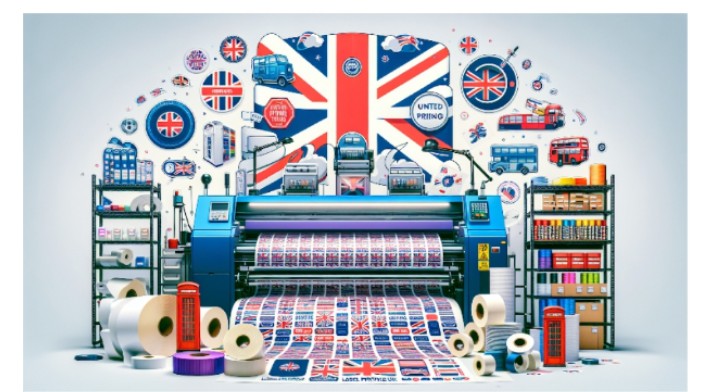Introduction
Label printing is an essential aspect of product packaging and identification for businesses in the United Kingdom. Whether you’re a small startup or a large corporation, high-quality printed labels are crucial for creating a professional image and ensuring your products stand out on the shelves. However, label printing can come with its own set of challenges. In this comprehensive guide, we’ll explore the top 10 label printing problems faced by UK businesses and provide practical solutions to help you overcome them.
1. Poor Print Quality
Causes of Poor Print Quality
One of the most common label printing problems is poor print quality. This can be caused by various factors, such as:
- Low-resolution artwork
- Incorrect color settings
- Inadequate printer maintenance
- Using the wrong type of label material
Solutions for Improving Print Quality
To ensure high-quality printed labels UK, consider the following solutions:
- Use high-resolution artwork: Ensure your label designs are created using vector graphics and have a resolution of at least 300 dpi.
- Calibrate your printer: Regularly calibrate your printer to ensure accurate color reproduction and alignment.
- Choose the right label material: Select a label material that is compatible with your printer and suitable for your product’s application.
- Perform regular maintenance: Clean your printer heads and replace worn-out parts to maintain optimal performance.
2. Label Adhesion Issues
Causes of Label Adhesion Problems
Another common problem faced by UK businesses is label adhesion issues. This can occur due to:
- Using the wrong type of adhesive for your application
- Exposure to extreme temperatures or moisture
- Applying labels to unclean or oily surfaces
- Insufficient pressure during label application
Solutions for Improving Label Adhesion
To ensure your labels adhere properly to your products, try these solutions:
- Select the right adhesive: Choose an adhesive that is suitable for your product’s surface and can withstand the environmental conditions it will be exposed to.
- Clean the surface: Ensure the surface is clean, dry, and free from oil or debris before applying the label.
- Use a label applicator: Invest in a label applicator machine to ensure consistent pressure and placement during label application.
- Consider a laminate: Apply a protective laminate over your labels to increase durability and resistance to moisture and abrasion.
3. Incorrect Label Sizing
Causes of Incorrect Label Sizing
Incorrect label sizing can lead to issues such as:
- Labels not fitting properly on the product
- Important information being cut off
- Wasted label material
Solutions for Ensuring Accurate Label Sizing
To avoid label sizing issues, follow these tips:
- Measure your products: Accurately measure the dimensions of your products to ensure your labels fit perfectly.
- Use label templates: Create label templates that match your product’s dimensions to ensure consistency and accuracy.
- Test before printing: Print a sample label and test it on your product to ensure proper fit and placement.
- Allow for bleed: Include a bleed area in your label design to account for slight variations in cutting.
4. Missing or Inaccurate Information
Causes of Missing or Inaccurate Information
Missing or inaccurate information on your labels can be caused by:
- Human error during data entry
- Outdated product information
- Incorrect label templates
- Printing errors
Solutions for Ensuring Accurate Label Information
To ensure your labels contain accurate and up-to-date information, consider these solutions:
- Implement data validation: Use data validation tools to prevent errors during data entry and ensure consistency across your labels.
- Regularly update product information: Keep your product information up-to-date and ensure it is reflected on your labels.
- Use automated label printing: Invest in automated label printing software that integrates with your product database to minimize human error.
- Proofread before printing: Always proofread your labels before sending them to print to catch any errors or inconsistencies.
5. Color Inconsistency
Causes of Color Inconsistency
Color inconsistency can occur due to:
- Incorrect color settings in your design software
- Differences in monitor calibration
- Using the wrong color profile for your printer
- Inconsistent ink or toner levels
Solutions for Maintaining Color Consistency
To ensure consistent color reproduction across your labels, try these solutions:
- Use Pantone colors: Specify Pantone colors in your label designs to ensure accurate color matching.
- Calibrate your monitors: Regularly calibrate your computer monitors to ensure accurate color representation.
- Use the correct color profile: Select the appropriate color profile for your printer to ensure accurate color reproduction.
- Maintain consistent ink levels: Regularly replace ink or toner cartridges to maintain consistent color output.
6. Label Durability Issues
Causes of Label Durability Problems
Label durability issues can arise from:
- Exposure to harsh environmental conditions
- Abrasion or scratching
- Using the wrong label material for your application
- Inadequate lamination or protection
Solutions for Improving Label Durability
To enhance the durability of your labels, consider these solutions:
- Choose the right label material: Select a label material that can withstand the environmental conditions your product will be exposed to.
- Use protective laminates: Apply a protective laminate over your labels to increase resistance to moisture, UV light, and abrasion.
- Consider specialty labels: For extreme conditions, consider using specialty labels such as high-temperature or chemical-resistant labels.
- Test for durability: Conduct durability tests on your labels to ensure they can withstand the intended application.
7. Barcode Scanning Issues
Causes of Barcode Scanning Problems
Barcode scanning issues can occur due to:
- Poor barcode print quality
- Incorrect barcode size or placement
- Using the wrong barcode symbology
- Damage to the barcode during handling
Solutions for Ensuring Barcode Scanability
To ensure your barcodes are easily scannable, follow these tips:
- Use high-resolution barcodes: Ensure your barcodes are printed at a high resolution to maintain clarity and scanability.
- Choose the right barcode size: Select an appropriate barcode size that is easily scannable and fits your label design.
- Use the correct symbology: Choose the appropriate barcode symbology for your application, such as EAN, UPC, or QR codes.
- Protect your barcodes: Apply a protective laminate over your barcodes to prevent damage during handling.
8. Label Alignment Problems
Causes of Label Alignment Issues
Label alignment issues can be caused by:
- Incorrect label template setup
- Misaligned printer sensors
- Inconsistent label feeding
- Worn-out printer parts
Solutions for Improving Label Alignment
To ensure proper label alignment, try these solutions:
- Use accurate label templates: Create label templates that match your label size and layout to ensure consistent alignment.
- Calibrate printer sensors: Regularly calibrate your printer’s sensors to ensure accurate label detection and placement.
- Use label guides: Utilize label guides or rollers to ensure consistent label feeding and alignment.
- Perform regular maintenance: Replace worn-out printer parts and clean the print head to maintain optimal performance.
9. Wasted Label Material
Causes of Label Material Waste
Label material waste can occur due to:
- Overprinting or underutilizing label sheets
- Incorrect label size or layout
- Printing errors or misprints
- Poor inventory management
Solutions for Minimizing Label Material Waste
To reduce label material waste and save costs, consider these solutions:
- Optimize label layouts: Design label layouts that maximize the number of labels per sheet and minimize waste.
- Use variable data printing: Implement variable data printing to print only the necessary labels and avoid overproduction.
- Implement quality control: Establish quality control measures to catch printing errors and misprints before they result in wasted material.
- Manage inventory effectively: Regularly monitor your label inventory and stock levels to avoid overordering or stockpiling unnecessary labels.
10. Inefficient Label Production Processes
Causes of Inefficient Label Production
Inefficient label production processes can be caused by:
- Manual label design and data entry
- Lack of automation in printing and application
- Ineffective communication between departments
- Poor production planning and scheduling
Solutions for Streamlining Label Production
To improve the efficiency of your label production processes, try these solutions:
- Implement label design software: Use label design software with built-in templates and automation features to streamline the design process.
- Invest in automated printing and application: Utilize automated label printing and application equipment to increase production speed and accuracy.
- Improve interdepartmental communication: Establish clear communication channels between design, production, and shipping departments to streamline workflows and minimize errors.
- Optimize production planning: Utilize production planning software to schedule jobs efficiently, allocate resources effectively, and minimize downtime.
- Train employees: Provide comprehensive training to employees on label design software, printing equipment, and production processes to ensure proficiency and consistency.
- Standardize processes: Develop standardized procedures for label design, printing, and application to maintain consistency and reduce variability.
- Implement quality control measures: Incorporate quality control checkpoints throughout the production process to identify and address errors promptly.
- Monitor and analyze performance: Regularly monitor key performance indicators (KPIs) such as production output, error rates, and downtime, and analyze data to identify areas for improvement.
- Continuously improve processes: Encourage a culture of continuous improvement by soliciting feedback from employees, identifying opportunities for innovation, and implementing process enhancements.
- Consider outsourcing: Evaluate the feasibility of outsourcing certain aspects of label production, such as design or printing, to specialized vendors to optimize efficiency and reduce costs.
By implementing these solutions, you can streamline your label production processes, enhance productivity, and achieve greater efficiency throughout your organization.
Conclusion
Label printing plays a vital role in the branding, identification, and safety of products for businesses across the United Kingdom. However, various challenges can arise during the label printing process, impacting the quality, accuracy, and efficiency of label production. In this comprehensive guide, we’ve addressed the top 10 label printing problems faced by UK businesses and provided practical solutions to overcome them.
From poor print quality to inefficient label production processes, each problem presents its own set of obstacles. By understanding the causes and implementing the suggested solutions, businesses can optimize their label printing operations and achieve superior results.
It’s essential for businesses to invest in high-resolution artwork, choose the right label materials and adhesives, ensure accurate label sizing and information, maintain color consistency, and enhance label durability. Additionally, addressing issues such as barcode scanning problems, label alignment issues, and wasted label material can lead to significant improvements in overall efficiency and cost-effectiveness.
Moreover, streamlining label production processes through the use of automation, improved communication, standardized procedures, and quality control measures can further enhance productivity and reduce errors. Continuous training, monitoring, analysis, and a commitment to continuous improvement are also key elements in achieving optimal label printing outcomes.
In conclusion, by adopting the solutions outlined in this guide and leveraging modern technologies and best practices, UK businesses can overcome label printing challenges, enhance their brand image, and ensure compliance with industry standards and regulations. With efficient label printing processes in place, businesses can streamline operations, reduce costs, and ultimately drive success in the competitive marketplace.


